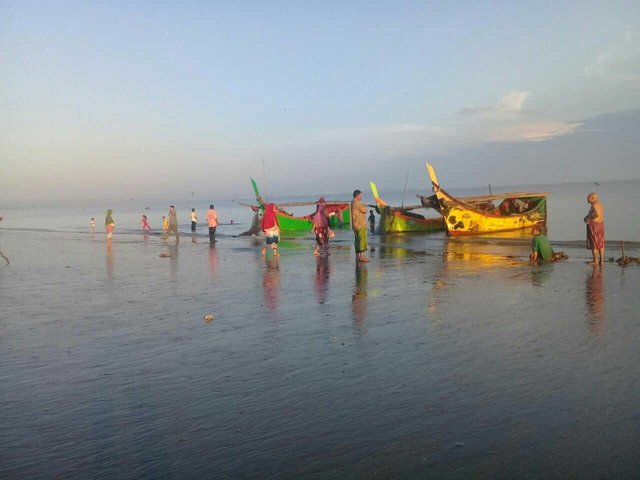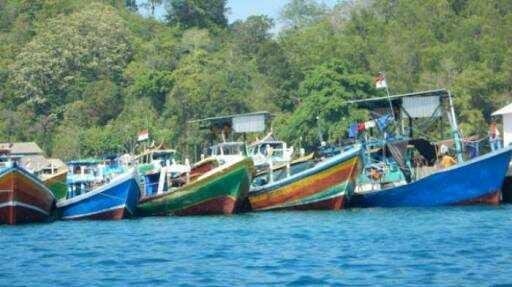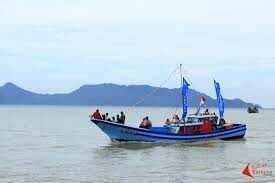History about fishing boats

Fishing vessels are boats or boats used to catch the sea, the lake, or the river. Various types of marine vessels are used in commercial fishing, sports, and recreation.
According to FAO, in 2004 there were at least four million commercial fishing vessels. [1] About 1.3 million are boats that have decks. Almost all of these ships are mechanized, and 40,000 of them weigh more than 100 tons. About two-thirds of the four million ships are traditional fishing boats of various types, driven by screens and oars. [1] The boat is usually used by traditional fishermen.
It is difficult to determine the number of recreational fishing boats. The size of the boat varies greatly, in addition to the purpose of its use is not always to catch fish.

Before the 1950s, there was little standardization of fishing vessels. The design can vary between ports and shipyards. Previously the boat was made of wood. However, due to the high maintenance costs and with the development of material technology, steel, fiberglass, and carbon fiber are more widely used.
The duration of making traditional fishing boats varies between six months to a year.
HISTORY OF FISHING BOATS
Past fishing vessels are rafts, canoes and boats made of wooden skeletons wrapped in animal skin or bark. [3] The oldest boat ever found in archeology was a canoe from the Neolithic Age around 7000-9000 years ago. This canoe is made from a coniferyang tree trunk perforated using a simple stone tool. [3] [4] A boat capable of sailing in the ocean and made of grass and coated grass sticks found in Kuwait. [5] These earlier ships have limited ability, just to float and move on water but can not afford to be used too far from the shore. They are used primarily to catch hunting and hunting.

Around 4000 BC, the ancient Egyptians built a long boat driven by oars with some humans. Further development of the boat so quickly with the discovery of a screen made of cotton wool so that the ship can go faster along with the wind. They then built larger boats to cross the ocean with oars and screens at once. In the year 3000 BC, the Egyptians began to have the ability to arrange wooden boards into the hull of the ship. [6] They also used a binder of Cyperus papyrus grass and other grass to unite the planks and clog the holes between the wooden planks. [6] The Khufu ship was built in this way.
The Dutch then built a herring hunter who became a blueprint for the construction of European fishing vessels. Herring Buss ships were used by Dutch fishermen until the 19th century. This type of vessel was probably first built in Hoorn around 1415 and was last made at Vlaardingen in 1841. It has a length of 20 meters and displacement between 60 and 100 tons. This ship uses a gill net to catch herring. The net was pulled at night by a dozen to 30 fishermen then salted and fermented on a wooden drum on board. [7]
In the 17th century dogger boats were made by the British who were the first trawlers and longlines to operate in the northern seas. Dogger name taken from the Dutch, dogger which means "trawler". The term dogger bank was used by the Dutch to call the area where fish were caught with a net. [8] Dogger is a slow, tough but capable ship fishing in the North Sea with extreme weather. [9] The ship is 15 meters wide, 4.5 meters wide, 1.5 meters draft and 13 ton displacement. The vessel is capable of carrying one ton of feed, three tons of salt, half a ton of food and firewood, and back with six tons of fish. [9]
Dory is a small boat with a shallow draft, usually only five to seven meters long. Dory has a relatively high edge, smooth stomach base, and a sharp bow, and is relatively easy to make because of its simple shape. Dory first appeared in a fishing settlement in New England around the early 18th century. [10] Dory is an adaptation of the French bateau boat used on the Saint Lawrence River in the 1600s. [11] Wherry is a beach boat that connects generations between the bateau and dory. Several other types of boats found in England, France, Italy, and Belgium also look similar to dory and are thought to affect the design of the dory. [12]
Dory designed to stack one another and make storage easier for the first time in the 1830s. This type of boats are used for easy carrying in large quantities to the middle of the sea to catch more fish. [10]
In the 19th century, a more effective design for trawlers was developed at the British fishing harbor, Brixham. This design is spreading all over the world and influencing the design of fishing vessels in various places. In the 1890s there were 300 trawlers of this type in the port. Some have now been preserved.